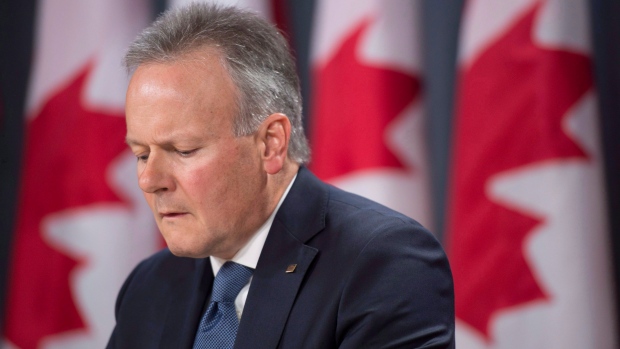Jan 18, 2017
Loonie suffers worst loss since Brexit vote as BoC keeps cut on the table
By Greg Bonnell

The Canadian dollar suffered its worst intraday percentage loss since the fallout from the Brexit vote rattled through global markets on June 24, shedding nearly 1.3 cents U.S. in Wednesday’s trade. The loonie was battered by a confluence of factors, as Bank of Canada Governor Stephen Poloz said the door is still open for a further interest rate cut, and his counterpart at the Federal Reserve, Janet Yellen, gave a boost to the U.S. dollar after she said the American economy is getting closer to running on its own.
Addressing the assembled media, Poloz made it clear the uncertainty surrounding U.S. president-elect Donald Trump’s policies is clouding the Bank of Canada's economic forecasts. But, the bank is certain of one thing -- the resurgence of the loonie will put a crimp on exports.
On the surface, the growth projections laid out in Wednesday's Monetary Policy Report appear rather upbeat: real GDP growth of 2.1 per cent in 2017 and 2018.
That gave the bank confidence in leaving its benchmark policy rate unchanged at 0.5 per cent. However, Poloz told reporters in Ottawa a rate hike could still happen. “Yes, a rate cut remains on the table,” he said.
As for trying to parse out what impact a Trump presidency will have on Canada's economy, the bank is mostly factoring in the positives for now. That is to say, "foreign demand will be boosted by U.S. fiscal stimulus."
Still, promised corporate tax cuts under Trump could put Canada at a competitive disadvantage, the bank warns.
And that "base case," the central bank readily admits, does not include any protectionist measures -- a hallmark of President-elect Trump's campaign rhetoric.
"While prospective protectionist trade measures in the United States would have material consequences for Canadian investment and exports, these measures have not been included in the base case."
In short, it's too early to tell. And that leaves a high level of uncertainty around the outlook.
While the Bank of Canada is in wait-and-see mode regarding U.S. policy under Trump, the Canadian dollar is sending clearer signals.
"Export growth will be limited by the recent appreciation of the Canadian dollar,” the Bank said in its MPR. And it went a step further in the press release announcing the rate decision, warning recent dollar strength is “exacerbating ongoing competitiveness challenges.”
The bank's assumption is that the Loonie will remain close to 75 cents over the next 18 months.
On Tuesday, the Canadian dollar jump 3/4 of a cent to 76.58 US, as Trump talked down the greenback, telling The Wall Street Journal the currency is "too strong."
Uncertainty swirls around the trade file as well. While some feel Canada will not be a target, a spokesman for the president-elect made it clear last week that protectionist trade policy won't be targeted at just China and Mexico.
With hopes of an export boom dimming for the bank, it's the highly indebted Canadian consumer to the rescue once again.
Household spending is seen as the single largest contributor to real GDP in 2017 and 2018, adding 1.3 percentage points to overall growth each year.
Canada's booming housing market, on the other hand, will be a modest drag -- negative 0.1 per cent this year -- due to "recent increases in mortgage rates and measures implemented by the federal government in October."
And while Canada posted a blowout jobs number in December -- almost 54,000 positions added -- the bank is sounding some cautious notes on that front.
Over the past year, the bank notes, job growth has been largely part-time, total hours have not moved higher, and wages are largely stagnant.
The services sector, the bank notes several times in the report, is where the job growth action will be. And it's not just slinging coffee. The bank says many of the service positions showing growth are high-paying ones, for instance in the sciences.
On the inflation front, the bank sees energy price pressures rising this year with commodity prices firming and several provinces putting a price on carbon.
When it comes to oil, the bank "still expects a significant drawdown of oil inventories in the second half of 2017," and assumes prices will remain near recent levels, including US$50 for WTI.
When it comes to Canada meeting its economic potential, the bank still sees that output gap closing around mid-2018.